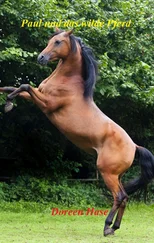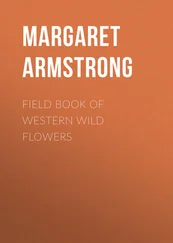1 ...8 9 10 12 13 14 ...28 Birthwort Aristolochia clematis (Aristolochiaceae)  HEIGHTto 80cm
HEIGHTto 80cm
Upright, unbranched perennial of scrubby places. FLOWERSYellow, tubular, 20–30mm long, fetid-smelling, the swollen base trapping pollinating insects; in clusters (June–Aug). FRUITSGreen, pear-shaped. LEAVESHeart-shaped, strongly veined. STATUSRare and declining; a relict of cultivation for midwifery.
Hall, Jean
Japanese Knotweed
Japanese Knotweed Fallopia japonica (Polygonaceae)  HEIGHTto 2m
HEIGHTto 2m
Fast-growing, invasive perennial, quick to colonise roadsides and other wayside places; hard to eradicate. FLOWERSWhitish, in loose, pendulous spikes arising from leaf bases (Aug–Oct). FRUITSPapery. LEAVESLarge, triangular, on red, zigzag stems. STATUSAlien, but now a widespread garden escape.
Knotgrass
Knotgrass Polygonum aviculare (Polygonaceae) HEIGHTto 1m (often prostrate)
Much-branched annual of bare soil and open ground. FLOWERSPale pink, in leaf axils (June–Oct). FRUITSNut-like, enclosed by the withering flower. LEAVESOval, leathery, alternate with a silvery basal sheath; main stem leaves larger than those on side branches . STATUSWidespread and common.

Equal-leaved Knotgrass
Equal-leaved Knotgrass Polygonum arenastrum (Polygonaceae) PROSTRATE
Mat-forming annual of bare ground and disturbed soil. Superficially like Knotgrass. FLOWERSPale pink, in leaf axils (June–Oct). FRUITSNut-like, enclosed by the withering flower. LEAVESOval, equal in size on main stem and side branches (cf. Knotgrass). STATUSWidespread and common.
Cleave, Andrew
Ray’s Knotgrass
Ray’s Knotgrass Polygonum oxyspermum (Polygonaceae) PROSTRATE
Mat-forming annual of undisturbed coastal sand and shingle beaches. FLOWERSPinkish white, in leaf axils (Aug–Sep). FRUITSNut-like, protruding beyond the withering flower. LEAVESOval, leathery, alternate, sometimes with slightly inrolled margins. STATUSLocal and commonest in the west.
Buckwheat
Buckwheat Fagopyrum esculentum (Polygonaceae) HEIGHTto 30cm
Hairless, upright annual, usually with reddish stems. Associated with disturbed or waste ground. FLOWERSPinkish, in stalked, branched clusters (July–Sep). FRUITSSmooth, 3-sided nuts. LEAVESBroad, arrow-shaped, the upper ones clasping the stem. STATUSWidespread but occasional, a relict of cultivation.
Common Bistort

Common Bistort
Common Bistort Persicaria bistorta (Polygonaceae)  HEIGHTto 60cm
HEIGHTto 60cm
Attractive perennial of damp meadows, forming patches in suitable locations. FLOWERSPink, in dense, 30–40mm terminal spikes (June–Aug). FRUITSNut-like. LEAVESOval or arrow-shaped, the lower ones stalked, the upper ones almost stalkless. STATUSLocally common in the north but rare in the south.

See also Sea Knotgrass
Knotweed Family Polygonaceae

Amphibious Bistort
Amphibious Bistort Persicaria amphibia HEIGHTto 40cm
Perennial of ponds and nearby dry land. Aquatic form has floating stems. FLOWERSPink, in cylindrical spikes (June–Sep). FRUITSNut-like. LEAVESNarrow; aquatic forms hairless, truncate at the base and long-stalked; terrestrial forms downy, rounded at the base and short-stalked. STATUSLocally common.


Alpine Bistort
Alpine Bistort Persicaria vivipara HEIGHTto 30cm
Upright, unbranched perennial of upland and northern grassland. FLOWERSIn terminal spikes; upper ones pale pink, lower ones reddish-brown bulbils (a means of vegetative reproduction) (June–Aug). FRUITSNut-like. LEAVESNarrow, grasslike, the margins inrolled. STATUSLocally common from N Wales northwards.
Water-pepper

Small Water-pepper
Water-pepper Persicaria hydropiper HEIGHTto 70cm
Upright, branched annual, characteristic of damp, bare ground such as winter-wet ruts, and shallow water. FLOWERSPale pink, in long spikes that droop at the tip (July–Sep). FRUITSSmall and nut-like. LEAVESNarrow, oval, with a peppery taste when chewed . STATUSWidespread and common, except in the north. Small Water-pepper P. minor is similar but much smaller (to 30cm), with shorter, narrower leaves (5–8mm across) that are not peppery. Local and scarce on bare pond margins.
Redshank

Redshank
Redshank Persicaria maculosa HEIGHTto 60cm
Upright or sprawling hairless annual with much-branched reddish stems . Found on disturbed ground and arable field margins. FLOWERSPink, in terminal spikes (June–Oct). FRUITSNut-like. LEAVESNarrow, oval, usually showing a dark central mark . STATUSWidespread and common throughout.


Pale Persicaria
Читать дальше

 HEIGHTto 80cm
HEIGHTto 80cm HEIGHTto 2m
HEIGHTto 2m




















